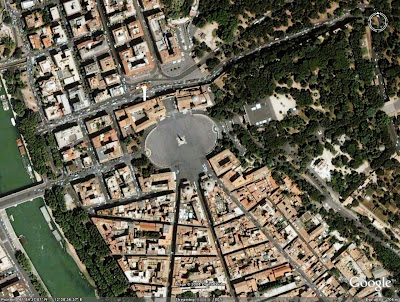Coordinates: 40° 49' 14" N, 14° 25' 47" E. Find With Google Earth.
Mount Vesuvius (Italian: Monte Vesuvio, Latin: Mons Vesuvius) is an active stratovolcano east of Naples, Italy. It is the only volcano on the European mainland to have erupted within the last hundred years, although it is not currently erupting.
Vesuvius is best known for its eruption in AD 79 that led to the destruction of the Roman cities of Pompeii and Herculaneum. It has erupted many times since and is today regarded as one of the most dangerous volcanoes in the world because of the population of 3,000,000 people now living close to it and its tendency towards explosive eruptions. It is the most densely populated volcanic region in the world. Learn more...















